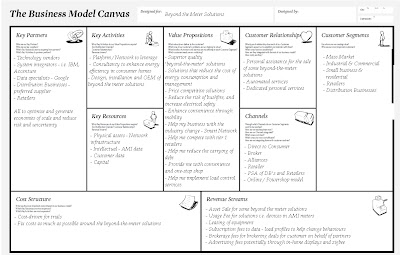Organisations need to find new strategies in 2012 that protect their revenue pools and capitalise on their labour. These new business models then need to be brought to life through the organisation implementing a seamless, efficiency driven operating model. Organisations need to adapt new strategies to drive sales in 2012 and beyond! Imagine finding a BUSINESS MODEL that:
- Is recession proof – even a bad economy won’t affect this negatively
- Is proactive, not reactive – you don’t rely on consumers to respond you your expensive advertising to get a job
- Provides ongoing cash flow – generating work orders even in a down economy
- Enables you to build life-long relationships with customers enabling you to become their “contractor for life”
- Builds long-term company equity increasing the value and saleability of your business
In order to deliver this organisations need to first look at the value propositions the core competencies of the business can deliver and what target segments. Once these tested value propositions have financial merit and sustainability with target customers, organisations need to allocate appropriate resources, people, processes, technologies, data capabilities, to channels that can distribute these value propositions and differentiated sources of value to customers.
Once the channels have been established through the allocation of resources, organisations need to determine the type of relationships they business wants to provide to their customers. In lean times often value propositions need to be service based, with no frills. Determining the type of relationship an organisation wants to have with their customers, determines how the firm must organise its people, decision rights, motivators and KPIs and formal lines and boxes. The types of customer relationships that an organisation's business model could deliver are:
1. Personal Assistance: This is based on human interaction where the customer can communicate with a real customer representative to get help during the sales or post purchase process
2. Dedicated personal assistance: Involves dedicating a customer representative specifically to an individual client. It represents the deepest and most intimate type of relationships and develops over a long period of time.
3. Self-service: Where a company maintains no direct relationship post a sale
3. Self-service: Where a company maintains no direct relationship post a sale
4. Automated services: Mixes a more sophisticated form of customer self-service with automated processes.
5. Communities: Companies utilise user communities to become more involved with customers/prospects and to facilitate connections between community members.
6. Co-creation: More companies are going beyond the traditional customer-vendor relationship to co-create value with customers. For example Amazon.com ask customers to write reviews to assist with the design of new and innovative products.
During lean times, when developing a business model, the organisation needs to determine the revenue streams the business requires to keep cashflows generating through the business. As cash is king in a contracting economy. The business model the organisation should structure for is a recurring revenue stream as a risk mitigation. This results in customers having on going payments for the ongoing value proposition.
One of the most important requirements of making a new business model recession proof is to maximise the key resources such as physical assets, intellectual capability, human capital and financial resources. Without careful allocation, organisation and structuring, a business model is doomed to fail in lean times.
In any new business model, it is critical to develop key activities. In lean times globally, it is crucial that new business models only focus on core that is central to driving the value proposition. Any peripheral activities will likely impede the speed and effectiveness of a new go to market business model.
When organisations are looking at new business models to succeed in the current economic climate, a hedge-risk strategy is to force alliances, strategic partnerships and joint ventures to share cost, effort, time, and resources. With effective quality measurement indicators, this can be an effective business model variable that can derive much success. For example look at the Sony-Ericsson partnership and it's success or Delta and Air France to reduce costs and route management in different geographic regions.
The final part of crystallising a recession-proof business model is arguably one of the most important - the cost structure. This needs to describe, monitor and most importantly contain all costs whilst operating the new business model. In a contracting economy the organisation needs to ensure costs do not blowout. So called 'no-frills' for instance have built business models entirely around a low cost structure - like SouthWest Airlines. In lean times business models need to find a the right blend of a low cost vs. value driven cost structure. Low cost to ensure cash is prevalent within the firm but not at the cost of losing value to customers whose brand loyalty flies out the window in tough times.
When developing a business model there is no right or wrong answer, but when an organisation is looking to unlock value, having total regard for the entire system using a systems view and cause and effect logic for all the business model variables is crucial before organisations attempt to organise their business in lean times.
Example business model to pursue beyond-the-meter revenue for a Utility

No comments:
Post a Comment